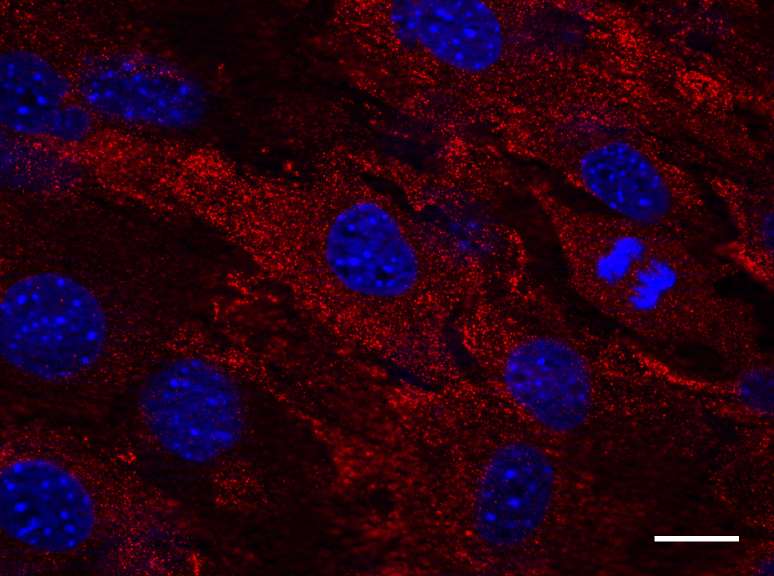Researchers develop mouse that could provide advance warning of next flu pandemic

Researchers in Germany have developed a transgenic mouse that could help scientists identify new influenza virus strains with the potential to cause a global pandemic. The mouse is described in a study, "In vivo evasion of MxA by avian influenza viruses requires human signature in the viral nucleoprotein," that will be published April 10 in The Journal of Experimental Medicine.
Influenza A viruses can cause devastating pandemics when they are transmitted to humans from pigs, birds, or other animal species. To cross the species barrier and establish themselves in the human population, influenza strains must acquire mutations that allow them to evade components of the human immune system, including, perhaps, the innate immune protein MxA. This protein can protect cultured human cells from avian influenza viruses but is ineffective against strains that have acquired the ability to infect humans.
To investigate whether MxA provides a similar barrier to cross-species infection in vivo, Peter Staeheli and colleagues at the Institute of Virology, Medical Center University of Freiburg, created transgenic mice that express human, rather than mouse, MxA. Similar to the results obtained with cultured human cells, the transgenic mice were resistant to avian influenza viruses but susceptible to flu viruses of human origin.
MxA is thought to target influenza A by binding to the nucleoprotein that encapsulates the virus' genome, and mutations in this nucleoprotein have been linked to the virus' ability to infect human cells. Staeheli and colleagues found that an avian influenza virus engineered to contain these mutations was able to infect and cause disease in the transgenic mice expressing human MxA.
MxA is therefore a barrier against cross-species influenza A infection, but one that the virus can evade through a few mutations in its nucleoprotein. Staeheli and colleagues think that their transgenic mice could help monitor the potential dangers of emerging viral strains. "Our MxA-transgenic mouse can readily distinguish between MxA-sensitive influenza virus strains and virus strains that can evade MxA restriction and, consequently, possess a high pandemic potential in humans," Staeheli says. "Such analyses could complement current risk assessment strategies of emerging influenza viruses, including viral genome sequencing and screening for alterations in known viral virulence genes."
More information: Deeg et al., 2017. J. Exp. Med. jem.rupress.org.cgi/doi/10.1084/jem.20161033














